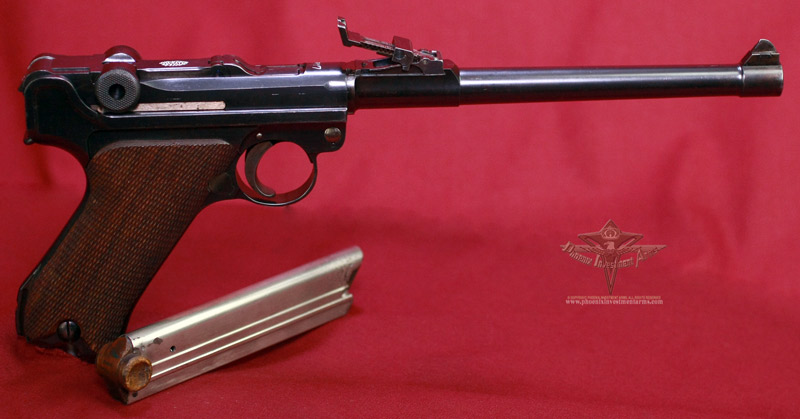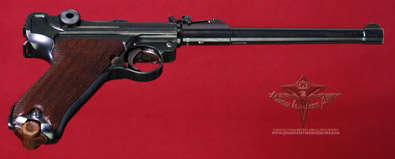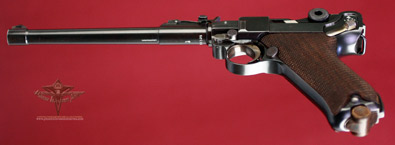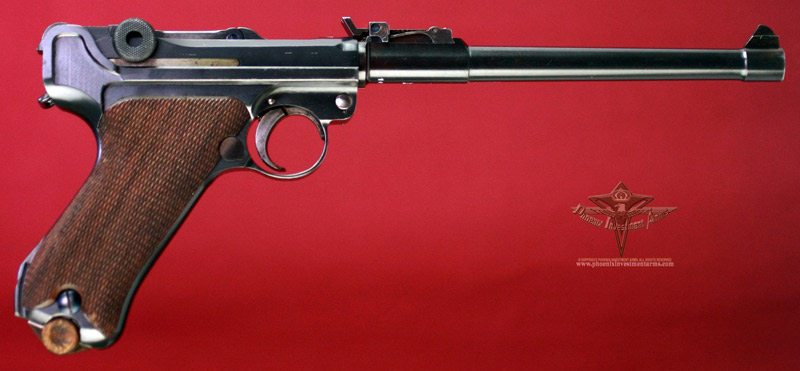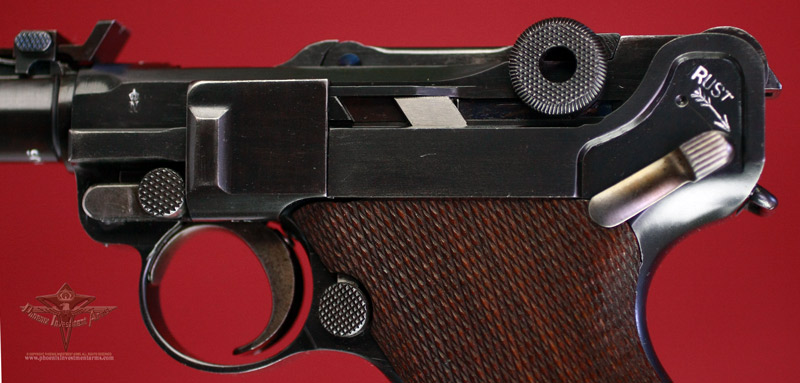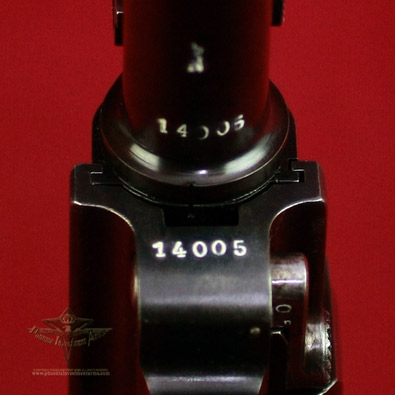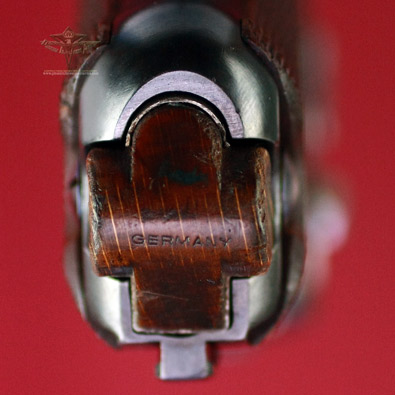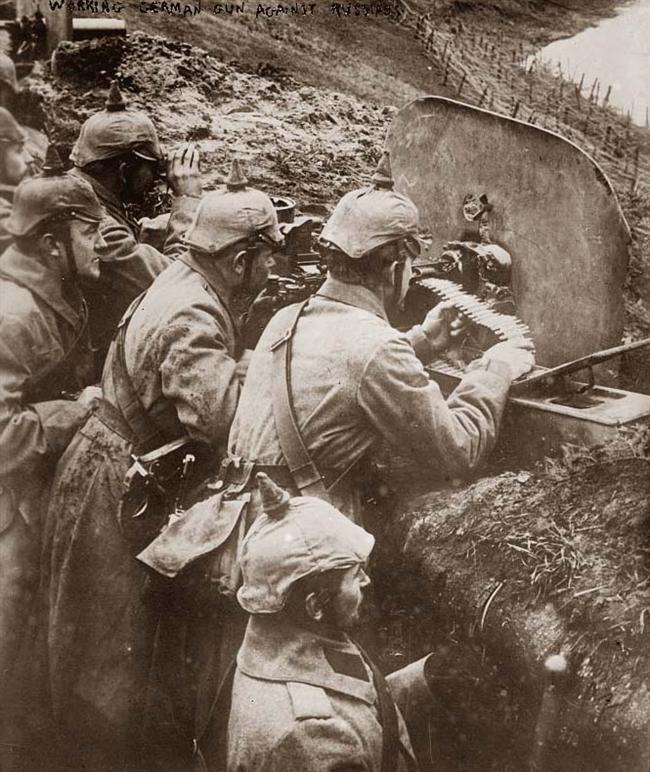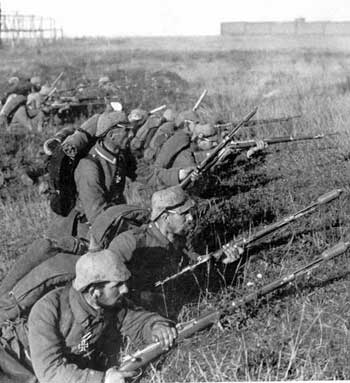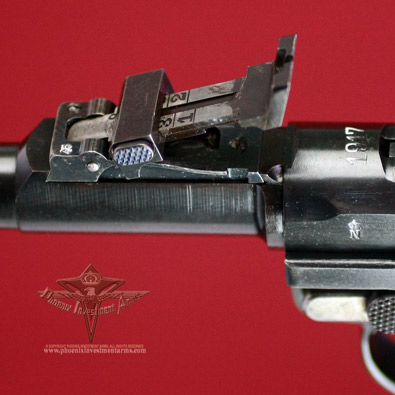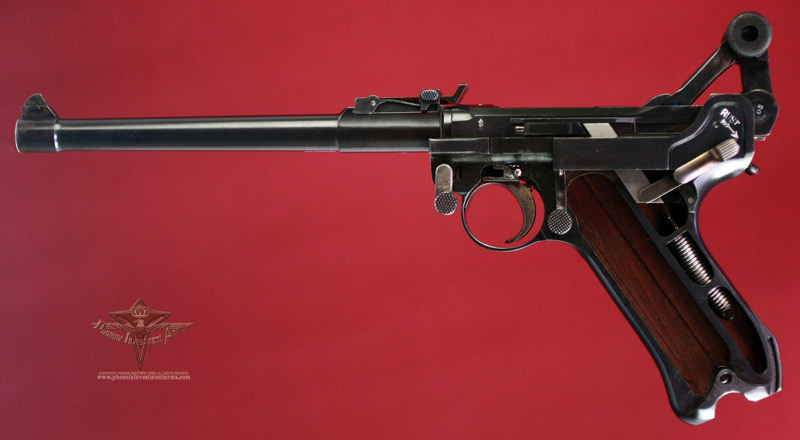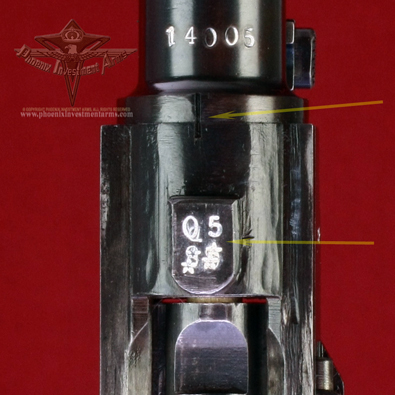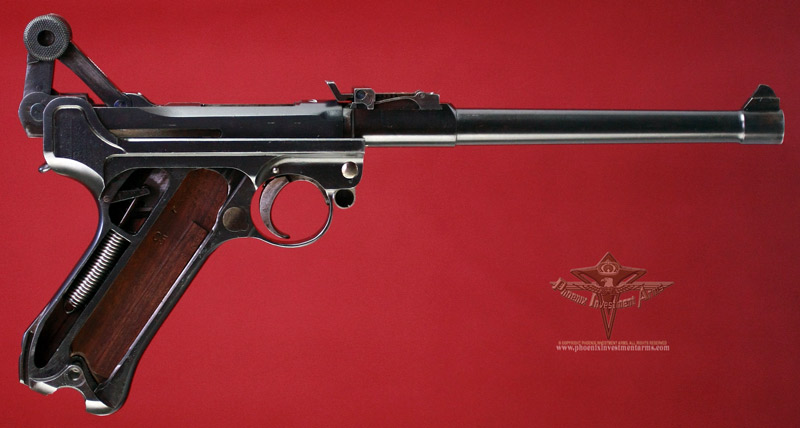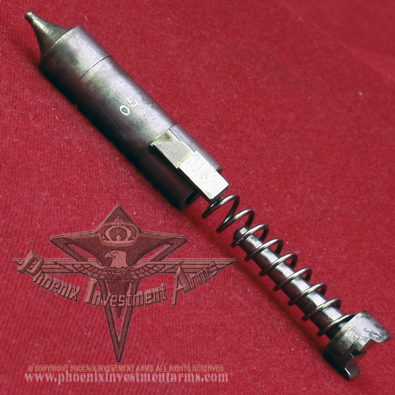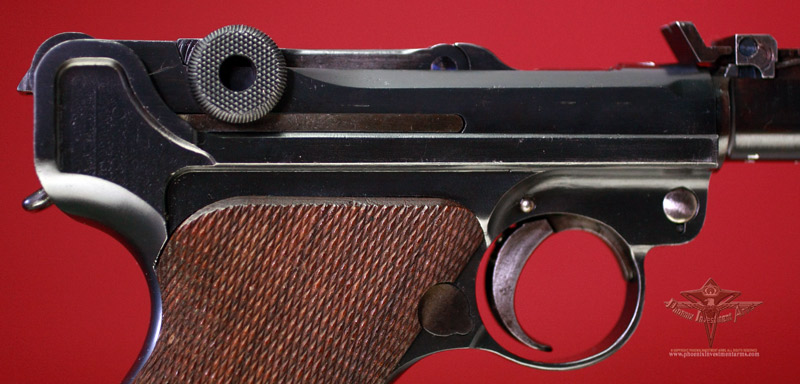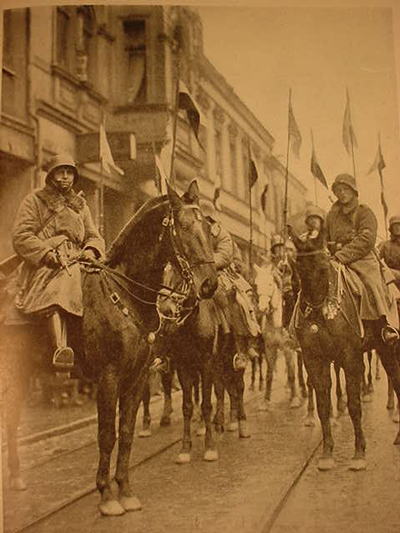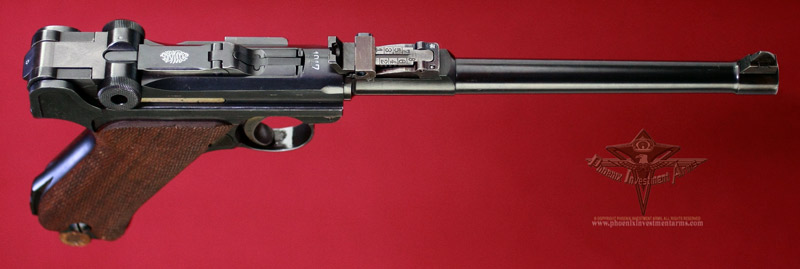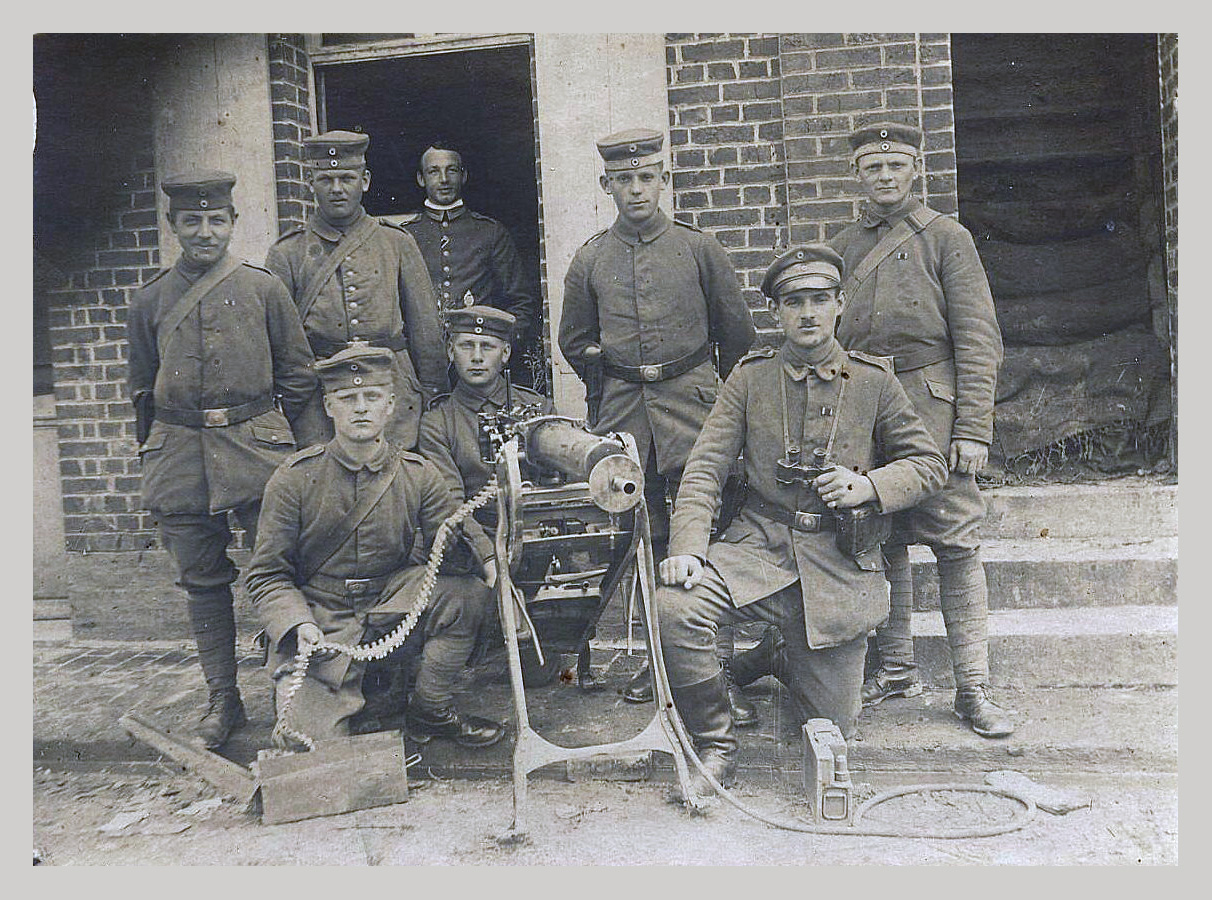1917/1928 Dutch Artillery SOLD
PHOENIX INVESTMENT ARMS - PREMIUM COLLECTOR LUGERS
Genuine German
Luger - Largest Variety of Lugers Offered
Home | Post WWI DWM | Erfurt Lugers | Mauser | Simson Suhl | Krieghoff | Vickers, Ltd | Swiss Bern | Other Guns
Bottom of Page
|
|
|
This is a 1914 Model, chamber dated 1917 Dutch DWM 8" model with the 800 meter adjustable rear sight mounted on the barrel. The 1920's pistole is the typical collection of WWI elements and in this case what appears to be a Dutch frame with the "Rust" pointed downward for the short sear. (1622) |
|
|
|
NOTE: Photographs taken today with the high mega-pixel camera show more than we sometimes can see with the human eye. Magnified close-ups show us tool marks and natural surface conditions that one normally doesn't see in the ordinary handling of the weapon. Photographs are copyrighted, all rights reserved, any extraction, reproduction or display of gun pictures without the express consent of the Phoenix Investment Arms is strictly prohibited. Thank you for your cooperation. |

